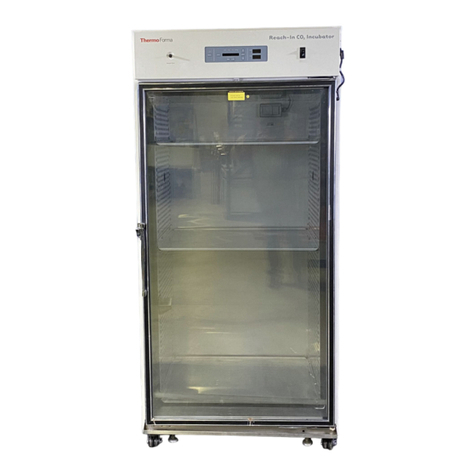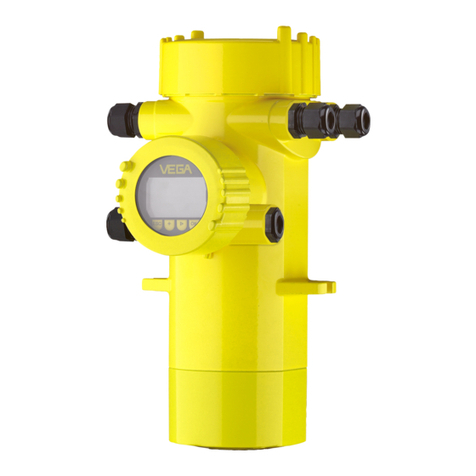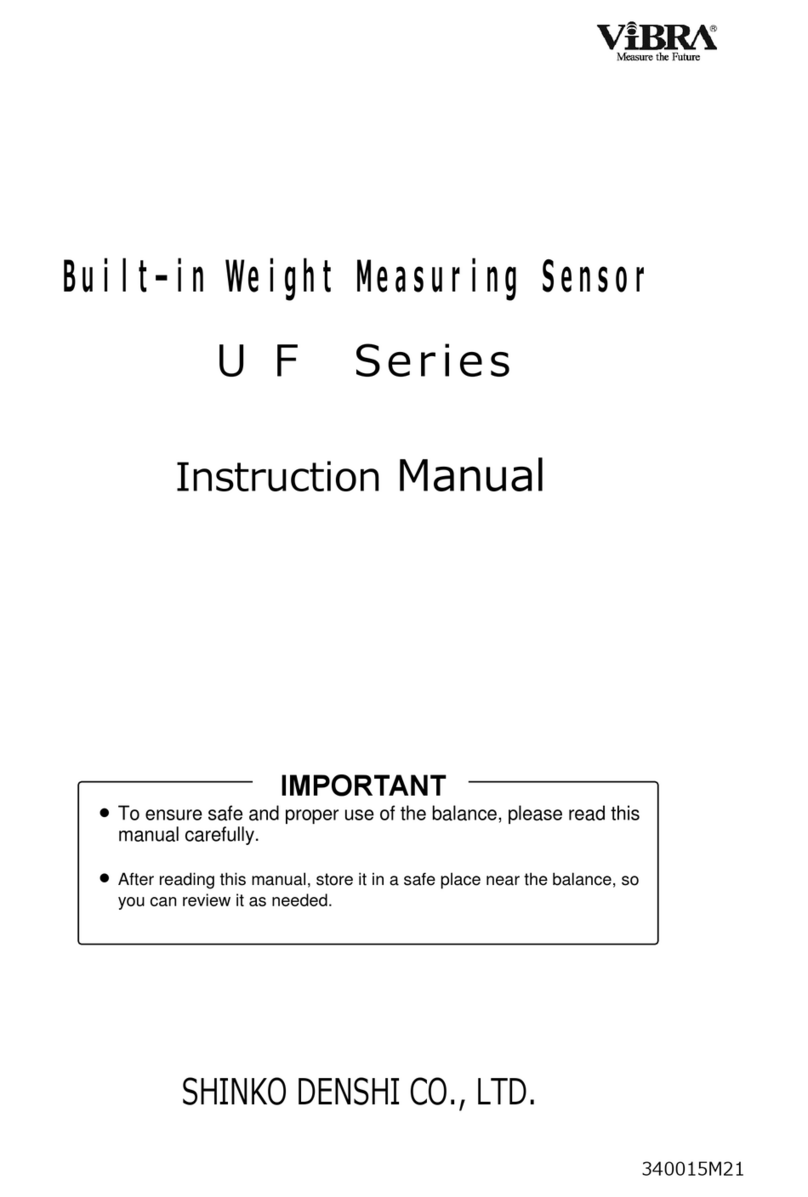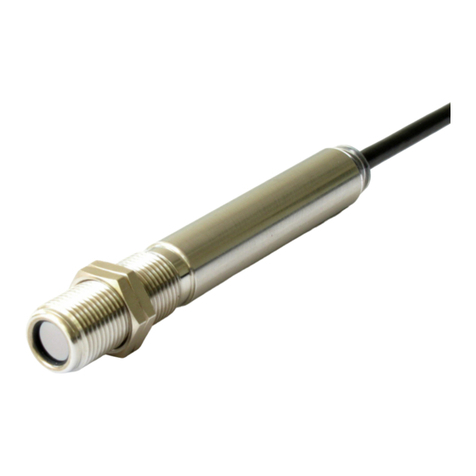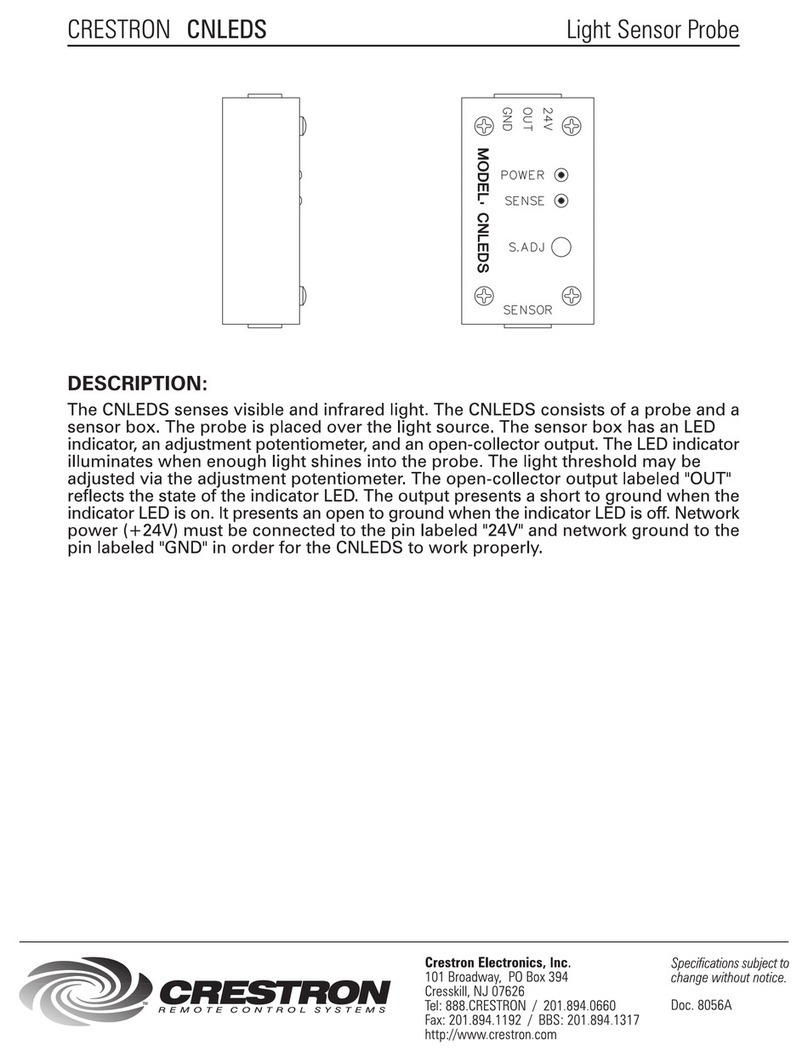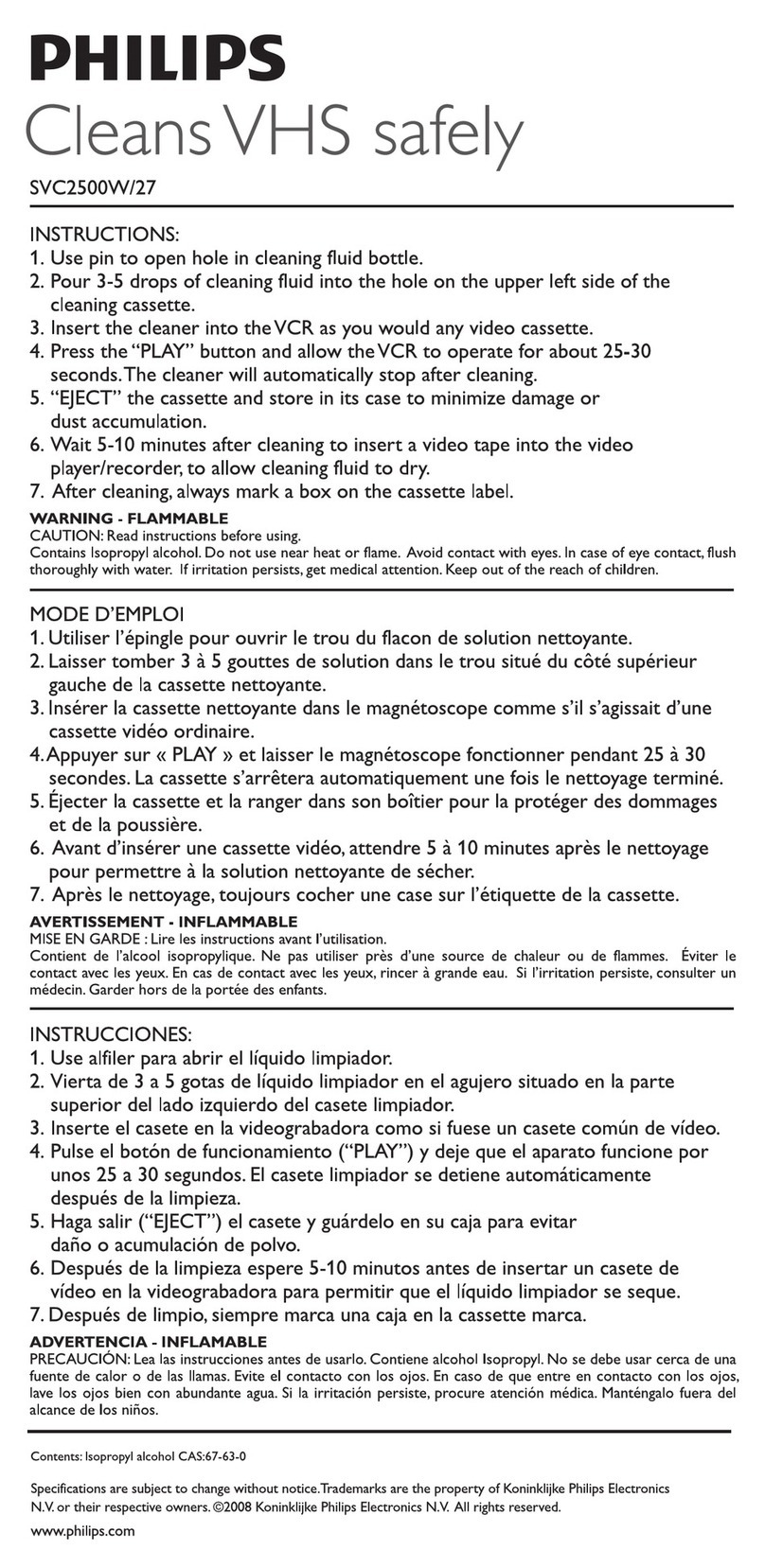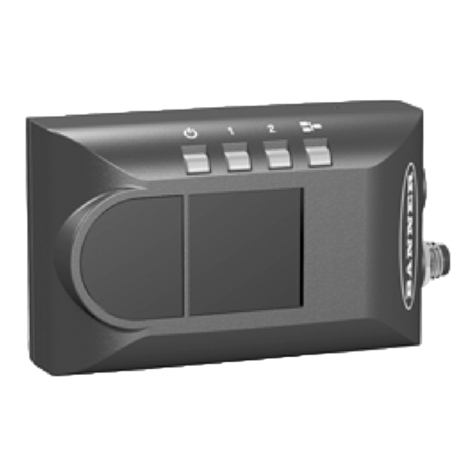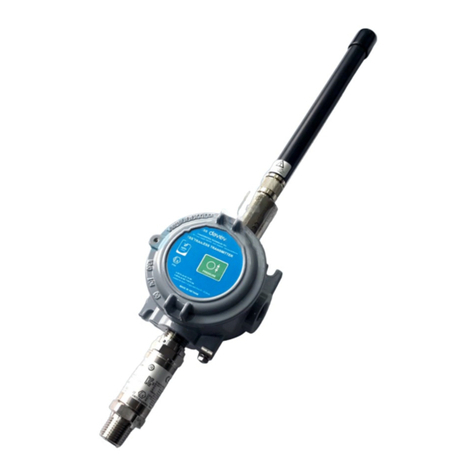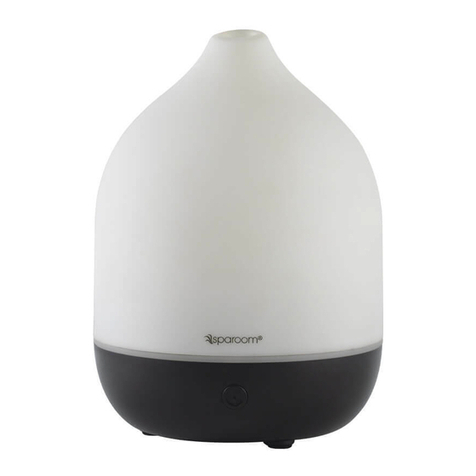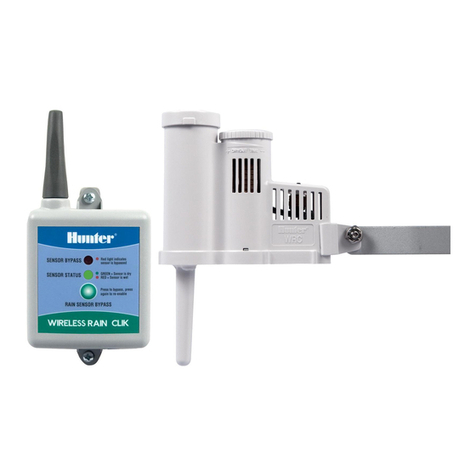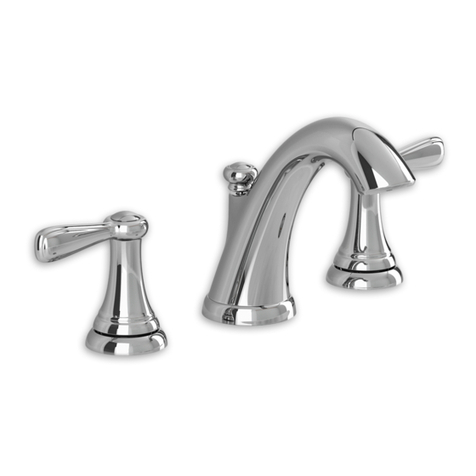Forma Scientific 3920 Operating instructions

Model 3920
29 cu. ft. Capacity
Reach-In Incubator
Operating and Maintenance Manual
Manual No: 7033920 Rev. 7
Forma Scientific, Inc.

Forma® Model 3920 _________________________________________________________________________________
i
Read This Instruction Manual.
Failure to read, understand and follow the instructions in
this manual may result in damage to the unit, injury to operat-
ing personnel, and poor equipment performance.
CAUTION! All internal adjustments and maintenance must
be performed by qualified service personnel.
Refer to the serial tag on the back of this manual.
The material in this manual is for information purposes
only. The contents and the product it describes are subject to
change without notice. Forma Scientific, Inc. makes no repre-
sentations or warranties with respect to this manual. In no event
shall Forma Scientific, Inc. be held liable for any damages, direct
or incidental, arising out of or related to the use of this manual.
MANUAL NUMBER 7033920
7 19207/IN-2827 6/28/00 Revised electrical schematics and parts list (250200 to 300345 contactor) ccs
6 -- 4/20/00 Quark format ccs
5 18896/SI-7773 2/8/00 New 3920 schematic - wiring harness, 430305 ccs
4 -- 11/22/99 Corrected Section 2.9 Offset Configuration ccs
3 17861/IN-2439 8/10/99 Updated schematics for CSA ccp
REV ECR/ECN DATE DESCRIPTION By

Forma® Model 3920 _________________________________________________________________________________
ii
Important operating and/or maintenance instructions. Read the accompanying text carefully.
Ce symbole attire l'attention de l'utilisateur sur des instructions importantes de fonctionnement et/ou d'entretien. Il
peut être utilisé seul ou avec d'autres symboles de sécurité. Lire attentivement le texte d'accompagnement.
Wichtige Betriebs- und/oder Wartungshinweise. Lesen Sie den nachfolgenden Text sorgfältig.
Importante instruccions de operacion y/o mantenimiento. Lea el texto acompanante cuidadosamente.
Potential electrical hazards. Only qualified persons should perform procedures associated with this symbol.
Ce symbole attire l'attention de l'utilisateur sur des risques électriques potentiels. Seules des personnes qualifiées
doivent appliquer les instructions et les procédures associées à ce symbole.
Gefahr von Stromschlägen. Nur qualifizierte Personen sollten die Tätigkeiten ausführen, die mit diesem Symbol beze-
ichnet sind.
Potencial de riesgos electricos. Solo personas das capacitadadas deben ejecutar los procedimientos asociadas con este
simbulo.
Equipment being maintained or serviced must be turned off and locked off to prevent possible injury.
Risques potentiels liés à l'énergie. L'équipement en entretien ou en maintenance doit être éteint et mis sous clé pour
éviter des blessures possibles.
Geräte, an denen Wartungs- oder Servicearbeiten durchgeführt werden, müssen abgeschaltet und abgeschlossen wer-
den, um Verletzungen zu vermeiden.
El equipo recibiendo servicio o mantenimiento debe ser apagado y segurado para prevenir danos.
Hot surface(s) present which may cause burns to unprotected skin, or to materials which may be damaged by elevated
temperatures.
Présence de surface(s) chaude(s) pouvant causer des brûlures sur la peau non protégée, ou sur des matières pouvant
être endommagées par des températures élevées.
Heiße Oberfläche(n) können ungeschützter Haut Verbrennungen zufügen oder Schäden an Materialien verursachen,
die nicht hitzebeständig sind.
Superficias calientes que pueden causar quemaduras a piel sin proteccion o a materiales que pueden estar danados
por elevadas temperaturas.
√ Always use the proper protective equipment (clothing, gloves, goggles, etc.)
√ Always dissapate extreme cold or heat and waer protective clothing.
√ Always follow good hygiene practices.
√ Each individual is responsible for his or her own safety.

Do You Need Information or Assistance on Forma Scientific
Products?
do, please contact us 8:00 a.m. to 7:00 p.m. (Eastern Time) at:
1-740-373-4763 Direct
1-888-213-1790 Toll Free, U.S. and Canada
1-740-373-4189 FAX
http://www.forma.com Internet Worldwide Web Home Page
fservice@forma.com Service E-MailAddress
If you
Our staff can provide information on pricing and give you quotations. We
can take your order and provide delivery information on major equipment items or make
arrangements to have your local sales representative contact you. Our products are listed on the
Internet and we can be contacted through our Internet home page.
Our staff can supply technical information about proper setup,
operation or troubleshooting of your equipment. We can fill your needs for spare or replacement
parts or provide you with on-site service. We can also provide you with a quotation on our
Extended Warranty for your Forma products.
Whatever Forma products you need or use, we will be happy to discuss your
applications. If you are experiencing technical problems, working together, we will help you
locate the problem and, chances are, correct it yourself...over the telephone without a service
call.
When more extensive service is necessary, we will assist you with direct factory trained
technicians or a qualified service organization for on-the-spot repair. If your service need is
covered by the warranty, we will arrange for the unit to be repaired at our expense and to your
satisfaction.
Regardless of your needs, our professional telephone technicians are available to assist
you Monday through Friday from 8:00 a.m. to 7:00 p.m. Eastern Time. Please contact us by
telephone or fax. If you wish to write, our mailing address is:
Forma Scientific, Inc.
Millcreek Road, PO Box 649
Marietta, OH 45750
International customers please contact your local Forma Scientific distributor.
Sales Support
Service Support
Forma® Model 3920 _________________________________________________________________________________
iii

Forma® Model 3920 _________________________________________________________________________________
iv
Table of Contents
Section 1 - Receiving . . . . . . . . . . . . . . . . . . . . . . . . . . .2 - 1
1.1 Preliminary Inspection . . . . . . . . . . . . . . . . . . . . . .2 - 1
1.2 Visible Loss or Damage . . . . . . . . . . . . . . . . . . . . .2 - 1
1.3 Responsibility for Shipping Damage . . . . . . . . . . .2 - 1
Section 2 - Installation and Start-Up . . . . . . . . . . . . . . .2 - 1
2.1 Location . . . . . . . . . . . . . . . . . . . . . . . . . . . . . . . . .2 - 1
2.2 Attaching the Drain Connections . . . . . . . . . . . . . . .2 - 1
2.3 RS-232 Output Interface & Remote Alarm Connector 2 - 2
a. Remote Alarm Contacts . . . . . . . . . . . . . . . . . . .2 - 2
2.4 Power Connection . . . . . . . . . . . . . . . . . . . . . . . . . .2 - 2
2.5 Start-Up Procedure . . . . . . . . . . . . . . . . . . . . . . . . .2 - 2
2.6 Setting the Overtemp Safety Thermostat . . . . . . . . .2 - 2
2.7 Setting the Undertemp Safety Thermostat . . . . . . . .2 - 3
2.8 Preparing the (Optional) CoBex Recorder . . . . . . .2 - 3
a. Installing the Battery . . . . . . . . . . . . . . . . . . . . .2 - 3
b. Changing the Chart Paper . . . . . . . . . . . . . . . . . .2 - 3
c. Changing the Pen . . . . . . . . . . . . . . . . . . . . . . . .2 - 3
d. Calibrating the Chart Recorder . . . . . . . . . . . . . .2 - 3
2.9 Offset Calibration . . . . . . . . . . . . . . . . . . . . . . . . . .2 - 4
2.10 Controller Configuration . . . . . . . . . . . . . . . . . . . .2 - 4
Section 3 - Control Panel Operation . . . . . . . . . . . . . . . .3 - 1
3.1 The 3920 Control Panel . . . . . . . . . . . . . . . . . . . . . .3 - 1
3.2 Setting the Operating Temperature (Figure 3-3) . . . .3 - 2
3.3 Programming the controller . . . . . . . . . . . . . . . . . .3 - 2
a. Removing the mechanical lockout . . . . . . . . . . .3 - 2
b. Removing the Software Lockout . . . . . . . . . . . .3 - 2
3.4 Air Exchange Ventilator Caps . . . . . . . . . . . . . . . . .4 - 1
Section 4 - Routine Maintenance . . . . . . . . . . . . . . . . . .4 - 1
4.1 Cleaning the Incubator . . . . . . . . . . . . . . . . . . . . . .4 - 1
Section 5 - Service . . . . . . . . . . . . . . . . . . . . . . . . . . . . .5 - 1
5.1 Access to the Electrical Components . . . . . . . . . . . .5 - 1
5.2 Replacing Overtemp/Undertemp Probe & Thermostat 5 - 1
5.3 Replacing the Temperature Sensor . . . . . . . . . . . . . .5 - 2
5.4 Removing the Top Section . . . . . . . . . . . . . . . . . . . .5 - 2
5.5 Setting the Door Heater Control . . . . . . . . . . . . . . . .5 - 3
Section 6 – Specifications . . . . . . . . . . . . . . . . . . . . . . .6 - 1
Section 7 - Parts List . . . . . . . . . . . . . . . . . . . . . . . . . . .7 - 1
Section 8 - Schematics . . . . . . . . . . . . . . . . . . . . . . . . . .8 - 1

Section 1 - Receiving
1.1 Preliminary Inspection
This item was thoroughly inspected and carefully packed
prior to shipment. All necessary precautions were taken to
ensure safe arrival of the merchandise at its destination.
Immediately upon receipt, before the unit is moved from the
receiving area, carefully examine the shipment for loss or dam-
age. Unpack the shipment and inspect both interior and exterior
for any in-transit damage.
1.2 Visible Loss or Damage
If any loss or damage is discovered, note any discrepancies
on the delivery receipt. Failure to adequately describe such evi-
dence of loss or damage may result in the carrier refusing to
honor a damage claim. Immediately call the delivering carrier
and request that their representative perform an inspection. Do
not discard any of the packing material and under no circum-
stances, move the shipment from the receiving area.
1.3 Responsibility for Shipping Damage
For products shipped F.O.B. Marietta, Ohio, the responsi-
bility of Forma Scientific, Inc. ends when the merchandise is
loaded onto the carrier’s vehicle.
On F.O.B. Destination shipments, Forma Scientific and the
carrier’s responsibility ends when your Receiving Department
personnel sign a free and clear delivery receipt.
Whenever possible, Forma Scientific will assist in settling
claims for loss or in-transit damage.
Section 2 - Installation and Start-Up
2.1 Location
Locate the unit on a firm, level surface in an area of mini-
mum ambient temperature fluctuation. A minimum of 12 inches
clearance is required at the top of the incubator and a minimum
of 3 inches clearance is required at the rear of the incubator to
facilitate adequate airflow around the refrigeration system.
2.2 Attaching the Drain Connections
The cabinet’s 3/8” MPT drain line connection is located on
the rear (lower left side) of the cabinet. A P-trap (Figure 2-1) is
included with the unit and must be installed on the connection.
To install the drain connection:
1. Using Teflon pipe thread tape, tape the threads on the
cabinet drain connection.
2. Using an open end adjustable wrench, install the P-trap
onto the connection. Make sure that the trap is posi-
tioned down.
3. Push a piece of 3/8” ID tubing onto the trap and direct
the tubing to a convenient drain. Install a hose clamp on
the tubing, if desired.
Figure 2-1
Cabinet drain p-trap
Forma® Model 3920__________________________________________________________________Installation and Start-Up
2 - 1

2.3 RS-232 Output Interface and Remote Alarm
Connector
The Model 3920 is equipped with an RS-232 Serial
Communication Interface for the remote transmission of tem-
perature data. The remote alarm connections are also included
on the terminal strip.
Figure 2-2
Terminal Pin Descriptions, RS-232 (1-6) and
Remote Alarm Connections (7-9)
a. Remote Alarm Contacts
Remote alarm connections are also included on the termi-
nal strip (Figure 2-2) providing Normally Open (N.O.) and
Normally Closed (N.C.) contacts. COM is the Common termi-
nal. The remote alarm will activate when either the incubator’s
temperature goes out of the set alarm limits.
2.4 Power Connection
The electrical junction box is located on the rear top sec-
tion of the incubator. With the junction box switch OFF, con-
nect the incubator to an adequate power source. See the electri-
cal data plate mounted on the unit or the electrical schematics
in the back of this manual.
2.5 Start-Up Procedure
Preset the controls as follows:
Overtemp Safety Thermostat . . . . . . . . . . .(Fully Clockwise)
Undertemp Safety Thermostat . . . . .(Fully Counterclockwise)
Main Power Switch . . . . . . . . . . . . . . . . . . . . . . . . . . . . . .ON
Temperature Controller . . . . . . . . . . . . . . . . .Desired Setpoint
Door Heater . . . . . . . . . . . . . . . . . . . . . . . . .40% (factory set)
Turn the Main Power switch on. The Power indicator and
Heat indicator will light. Turn the Refrigeration switch on and
the indicator will light.
The compressor and refrigeration lights will not
come on if the chamber temperature is within
±4°C of the temperature controller.
2.6 Setting the Overtemp Safety Thermostat
Allow the chamber temperature to stabilize, then set the
overtemp safety thermostat as follows:
1. Turn the overtemp control knob slowly counterclockwise
until the audible alarm sounds and the overtemp indica-
tor lights.
2. Turn the overtemp control knob clockwise approximately
two units on the scale. The alarm should be silenced and
the overtemp indicator light should go out.
The overtemp safety thermostat is now set a few degrees
above the control temperature setpoint. When the chamber tem-
perature rises to the overtemp control point, the alarm system
will activate, power to the heaters will shut off, and the cham-
ber temperature will be maintained at the overtemp control
point.
When an overtemp condition occurs, the cause must be
determined and corrected before normal operation under the
main temperature controller can be resumed.
Note: When the chamber temperature control setpoint is
changed, the overtemp safety thermostat must be reset to
accommodate the change.
Forma® Model 3920__________________________________________________________________Installation and Start-Up
2 - 2
123456789
Terminal Strip Connections
Temperature
RS 232 Remote Alarm
(Shown in alarm)
TRANSMIT
COMMON
COMMON
N.O.
N.C.
RECEIVE

2.7 Setting the Undertemp Safety Thermostat
Allow the chamber temperature to stabilize, then set the
undertemp safety thermostat as follows:
1. Turn the undertemp control knob slowly clockwise until
the audible alarm sounds and the undertemp indicator
lights.
2. Turn the undertemp control knob counterclockwise
approximately two units on the scale. The alarm should
be silenced and the undertemp indicator light should go
out.
The undertemp safety thermostat is now set a few degrees
below the control temperature setpoint. When the chamber tem-
perature drops to the undertemp control point, the alarm system
will activate, power to the compressor will shut off, and the
chamber temperature will be maintained at the undertemp con-
trol point.
When an undertemp condition occurs, the cause must be
determined and corrected before normal operation under the
main temperature controller can be resumed.
Note: When the chamber temperature control setpoint is
changed, the undertemp safety thermostat must be reset to
accommodate the change.
2.8 Preparing the (Optional) CoBex Recorder
a. Installing the Battery
The seven-day circular chart recorder is located on the
front of the incubator cabinet and is protected by a glass door.
To prepare the recorder for operation, open the glass door
and snap the connector onto the 9-volt battery as shown in
Figure 2-3. If the unit is operating, the green LED lights steady.
If the unit is not turned on, the LED blinks.
Figure 2-3
If the battery is weak or not connected, the green LED will
flash. If power is lost to the cabinet, the LED will also flash.
When replacing the 9-volt battery, use only an alkaline style
battery. Dispose of the old battery following established envi-
ronmental practices.
b. Changing the Chart Paper
1. Press the Change Chart button (#3) and hold it for 1 sec-
ond until the pen begins to move to the left of the chart.
See Figure 2-3.
2. Remove the existing chart by unscrewing the center
knob securing it.
3. Install the new chart, positioning it so that the correct
time line coincides with the time line groove on the
chart plate.
4. Replace the center knob and screw it tightly against the
chart.
c. Changing the Pen
1. Using a small flat blade screwdriver, loosen the 2 screws
holding the pen arm and remove the pen and arm as an
assembly.
2. Unsnap the plastic hinge securing the pen. Remove and
discard the old pen.
3. Install the new pen by snapping the hinge securely
around the pen arm.
4. Re-install the pen assembly by sliding the pen arm under
the screws, positioning the pen tip in the time line
groove. Tighten the screws.
5. Push the Chart Change button
(Figure 2-4) and hold it for 1
second until the pen begins to
move back onto the chart.
Note: Make sure that the pen is mark-
ing on the chart. It may be necessary to
gently lift the pen onto the chart paper.
Figure 2-4
d. Calibrating the Chart Recorder
1. Place an accurate thermometer(s) in the chamber next to
the recorder’s probe(s). After about three minutes, com-
pare the thermometer with the chart recorder. For 2 pen
operations, also compare the second thermometer.
Forma® Model 3920__________________________________________________________________Installation and Start-Up
2 - 3
12
3
timeline
groove
press to
change
chart
slotted screws
(loosen only) 9-voltbattery

Note: For 2 pen operations, first select the pen you wish to cali-
brate. Hold down the #1 arrow for the red (#1) pen or the #2
arrow for the blue (#2) pen, until the light goes out. Refer to
Figure 2-4. Then adjust as necessary.
If an adjustment is necessary, press either the #1 or #2 but-
ton to move the pen left or right. The button must be held about
five seconds before the pen begins to move. Release the button
when the pen matches the thermometer.
2.9 Offset Calibration
It may be necessary to calibrate the temperature controller
to match an independent temperature sensor. To do so, follow
the next few steps.
1. Suspend an independent, calibrated sensor(s) in the cen-
ter of the interior chamber.
2. Allow approximately 30 minutes for the incubator to
stabilize.
3. Turn off the main power switch.
4. Wear a grounding wrist strap to avoid damaging any of
the electrical components.
Figure 2-5
5. Remove the 982 controller module(s) by pressing in the
four retaining tabs, two on the right side, two on the left
side. Refer to Figure 2-5. Pull the controller module out
by gently rocking it from side to side.
6. Looking at the top and right side of the controller mod-
ule, locate the red DIP switches indicated in Figure 2-6.
Use your fingernail or a small screwdriver, to turn off
SW 2 by moving the white toggle towards the front of
the module as shown in the illustration.
7. Return the con-
troller into its frame
and firmly press on
the top and bottom
of the bezel until all
four locking tabs
“click” into place.
Figure 2-6
Forma® Model 3920__________________________________________________________________Installation and Start-Up
Press Press
Side View
SW 2
SW 1
ON OFF
2 - 4
8. Turn on the main power switch.
9. Press the Up and Down Arrow keys simultaneously for
3 seconds. The word “InPt” will appear in the upper dis-
play, and “set” will appear in the lower display.
10. Press the Down Arrow once, then continue to press the
Mode key until “LOC” appears in the lower display. The
upper display will show 2. Press the Down Arrow until 0
appears.
11. Press the Mode key once, then the Up Arrow once.
“InPt” will appear in the upper display, and “set” will be
in the lower display. Press the Mode key until “CAL 1”
appears in the lower display. Press the Up or Down
Arrow key to either add or subtract an offset value. This
would be the difference between the actual value shown
on the controller, and the reference sensor value.
12. Press the Display key once.
To turn the hardware lockout back on:
1. Press the Up and Down Arrow keys simultaneously for
3 seconds. The word “InPt” will appear in the upper dis-
play, and “set” will appear in the lower display.
2. Press the Down Arrow once, then continue to press the
Mode key until “LOC” appears in the lower display. The
upper display will show 0. Press the Up Arrow until 2
appears.
3. Press the Display key once.
4. Turn off the main power switch.
5. Wear a grounding wrist strap to avoid damaging any of
the electrical components.
6. Remove the 982 controller module(s) by pressing in the
four retaining tabs, two on the right side, two on the left
side. Pull the controller module out by gently rocking it
from side to side.
7. Looking at the top and right side of the controller mod-
ule, locate the red DIP switches. Use your fingernail or a
small screwdriver, to turn on SW 2 by moving the white
toggle towards the back of the module.
8. Return the controller into its frame and press firmly on
the top and bottom of the bezel until all four locking
tabs “click” into place.
9. Turn on the main power switch.
2.10 Controller Configuration
The controller has been pre-configured at the factory.
Reference copies of the configuration records are included on
the following pages.
The controller should not be re-configured with-
out first consultingForma Scientific Service
department at 1-888-213-1790.

(WATLOW 982) CONFIGURATION RECORD
CUSTOMER:
JOB NUMBER:
UNT SERIAL NUMBER:
CONTROL TYPE: Temperature
PREPARED BY: DATE
COMPLETED BY: DATE
Switch Configuration:
Main Boards
Input 1 Board
Output 3 Option board
SW1
ON
SW1
OFF
Jumper switch setting:
SW2
ON
SW2
OFF
Form B
SW3
ON
Software Configuration:
Operations Menus
SYS:
Ei1S
NA
Ent4
NA
A3LO
-73.3
A4Hi
NA
Ei2S
NA
A2LO
NA
A3Hi
34.0
Aut
OFF
Ent3
NA
A2Hi
NA
A4LO
NA
PID:
Pb1
2.0
dE1
NA
It2
NA
dB
0.0
rE1
0.50
Ct1
5
rA2
0.25
It1
NA
Pb2
1.0
dE2
NA
rA1
0.19
rE2
0.25
Ct2
30
PROG:
See Programming Sheets if required.
Setup Menus
InPt:
In1
RT.D
CAL1
**
rL2
NA
CAL2
NA
dEC1
NA
rtd1
DIN
rH2
NA
Hunt
NA
rL1
-20.0
Ftr1
2
LrnL
NA
rHi
80.0
In2
NA
LrnH
NA
OtPt:
Ot1
Ht
AL2
NA
LAt3
nLA
SIL4
NA
PrC1
NA
LAt2
NA
SIL3
OFF
Aout
NA
HyS1
0.1
SIL2
NA
Ot4
NA
PrC3
NA
Ot2
CL
Ot3
AL3
AL4
NA
ArL
NA
PrC2
NA
AL3
Pr1
HyS4
NA
ArH
NA
HyS2
0.1
HyS3
0.1
LAt4
NA
ACAL
NA
gLbL:
C_F
C
Anun
OFF
PtyP
ti
PStr
StPt
Err
nLA
LoP
-100
gSd
0
LOC
2
*
Ei1
NO
HiP
100
POut
Cont
Ei2
NA
AtSP
90
IdSP
NA
* LOC should be set at 0 until factory testing and calibration is complete.
** This is a calibration factor and will vary from unit to unit.
COM:
bAUd
9600
dAtA
70
PrOt
FULL
Addr
0
IntF
NA
3940CONFIGS.XLS PAGE1 REV9 2/29/00

HONEYWELL TRULINE CONFIGURATION RECORD SHT 1 OF 4
CUSTOMER:
JOB NUMBER:
UNIT SERIAL #:
CONTROL TYPE:
PREPARED BY: DATE: / /
COMPLETED BY: DATE: / /
GROUP FUNCTION VALUE OR GROUP FUNCTION VALUE OR
PROMPT
PROMPT
SELECTION
PROMPT
PROMPT
SELECTION
TUNING1 PROP BD or CHART CHRTSPD 7 DAY
GAIN HOUR/REV
RATE MIN TIME DIV 21
RSET MIN or MINOR DIV FOUR
RESET RPM or CONTINUE NO
MAN RSET CHART NAME
CYCSEC HEADER YES
PROP BD2 or REMSW NONE
GAIN2 WAKEMIN
RATE2MIN WAKE HR
RSET2MIN or WAKE DAY
RSET2RPM
WAKE MON
CYC2SEC
TIME MINUTES (CURRENT)
TUNING2 PROP BD or HOURS (CURRENT)
GAIN DAY (CURRENT)
RATE MIN MONTH (CURRENT)
RSET MIN or YEAR (CURRENT)
RSET PRM or
DAY
(CURRENT)
MAN RSET
CYCSEC PEN1 PEN1 ENABLE
PROP BD2 or PEN1IN INPUT 1
GAIN2 CHART1HI 80
RATE2MIN CHART1LO -20
RSET2MIN or PEN1ON
RSET2RPM PEN1OFF
CYC2SEC
MAJORDIV
10
MINORDIV 10
SP RAMP1
SP RAMP
RNG1TAG
TEMP
TIME MIN
FINAL SP PEN2 PEN2 ENABLE
SP RATE PEN2IN INPUT 2
EU/HR UP CHART2HI 100
EU/HR DN CHART2LO 0
SP PROG
PEN2ON
PEN2OFF
SP RAMP2 SP RAMP MAJORDIV 10
TIME MIN MINORDIV 10
FINAL SP
RING2TAG
% RH
SP RATE
EU/HR UP PEN3 PEN3 DISABLE
EU/HR DN PEN3IN
SP PROG CHART3HI
CHART3LO
PEN3ON
PEN3OFF
MAJORDIV
MINORDIV
RING 3 TAG
HTRUCON3940.xls

HONEYWELL TRULINE CONFIGURATION RECORD
SHT 2 OF 4
GROUP FUNCTION VALUE OR GROUP FUNCTION VALUE OR
PROMPT
PROMPT
SELECTION
PROMPT
PROMPT
SELECTION
PEN4 PEN4 DISABLE INPUT4 DECIMAL
PEN4IN UNITS
CHART4HI ENGUNITS
CHART4LO IN4TYPE
PEN4ON XMITTER
PEN4OFF IN4HI
MAJORDIV IN4LO
MINORDIV CUTOFF4
RNG4TAG
INPTCOMP
FILTER4
INPUT1
DECIMAL
XXX.X
BURNOUT
UNITS DEG C
ENGUNITS TOTAL1 (Value)
IN1TYPE 100 PT RESETTOT
XMITTER TOTAL1
IN1HI 482.2 TOTALEU
IN1LO -184.4 RATE
CUTOFF SCALER
INPTCOMP
RSETABLE
FILTER1 2
BURNOUT
UP
TOTAL2
(Value)
RSETTOT
INPUT2 DECIMAL XXXX TOTAL2
UNITS EU TOTALEU
ENGUNITS RH RATE
IN2TYPE 0-5 V SCALER
XMITTER
LINEAR
RSETABLE
IN2HI 100
IN2LO 0CONTROL1 PID SETS
CUTOFF2 SW VALUE
INPTCOMP SP SOURC
FILTER2 2RATIO
BURNOUT
UP
BIAS
SP TRACK
INPUT3 DECIMAL POWER UP
UNITS SP HILIM
ENGUNITS SP LOLIM
IN3TYPE ACTION
XMITTER OUT HILIM
IN3HI OUT LOLIM
IN3LO DROPOFF
CUTOFF3 DEADBAND
INPTCOMP OUT HYST
FILTER3 FAILSAFE
BURNOUT REM SW
MAN KEY
PBorGAIN
MINorRPM
CONT1ALG
OUT1ALG
4-20 RNG
SHEDMODE
SHED SP
HTRUCON3940.xls

HONEYWELL TRULINE CONFIGURATION RECORD
SHT 3 OF 4
GROUP FUNCTION VALUE OR GROUP FUNCTION VALUE OR
PROMPT
PROMPT
SELECTION
PROMPT
PROMPT
SELECTION
CONTROL2 PID SETS ALARMS A1S1 VAL
SW VALUE A1S2 VAL
SP SOURC A1S1 TYPE NONE
RATIO A1S2 TYPE NONE
BIAS A1S1 HL
SP TRACK A1S1 EV
POWER UP A1S2 HL
SP HILIM A1S2 EV
SP LOLIM AL1 HYST 0.1
ACTION A2S1 VAL
OUT HILIM A2S2 VAL
OUT LOLIM A2S1 TYPE NONE
DROPOFF A2S2 TYPE NONE
DEADBAND A2S1 HL
OUT HYST A2S1 EV
FAILSAFE A2S2 HL
REM SW A2S2 EV
MAN KEY AL2 HYST
PBorGAIN A3S1 VAL
MINorRPM A3S2 VAL
CONT1ALG A3S1 TYPE
OUT1ALG A3S2 TYPE
4-20 RNG A3S1 HL
SHEDMODE A3S1 EV
SHED SP
A3S2 HL
A3S2 EV
OPTIONS INPUT 1 ENABLE AL3 HYST
INPUT2 ENABLE A4S1 VAL
INPUT3 DISABLE A4S2 VAL
INPUT4 DISABLE A4S1 TYPE
CONTROL1 DISABLE A4S2 TYPE
CONTROL2 DISABLE A4S1 HL
REJFREQ 60 HZ A4S1 EV
HF REJ ENABLE A4S2 HL
AUX OUT DISABLE A4S2 EV
4mA VAL AL4 HYST
20mA VAL A5S1 VAL
RELHUMID NO A5S2 VAL
ATMPRES A5S1 TYPE
DEVIATION NONE A5S2 TYPE
DEVSETPT A5S1 HL
SCROLL NONE A5S1 EV
INP ALG A5S2 HL
COEFF A5S2 EV
PV HIGH AL5 HYST
PV LOW A6S1 VAL
RATIO A A6S2 VAL
BIAS A A6S1 TYPE
RATIO B A6S2 TYPE
BIAS B A6S1 HL
RATIO C A6S1 EV
BIAS C A6S2 HL
GRANDTOT A6S2 EV
ComSTATE DISABLE AL6 HYST
ComADDR
SHEDTIME
UNITS
HTRUCON3940.xls

HONEYWELL TRULINE CONFIGURATION RECORD
SHT 4 OF 4
GROUP FUNCTION VALUE OR GROUP FUNCTION VALUE OR
PROMPT
PROMPT
SELECTION
PROMPT
PROMPT
SELECTION
EVNT MSG EVENT 1 NONE
MESSAGE 1
POSITION 1
EVENT 2 NONE
MESSAGE 2
POSITION 2
EVENT 3 NONE
MESSAGE 3
POSITION 3
EVENT 4 NONE
MESSAGE 4
POSITION 4
EVENT 5 NONE
MESSAGE 5
POSITION 5
EVENT 6 NONE
MESSAGE 6
POSITION 6
LOCKOUT PASSWORD
LOCKOUT MAX
CHANGE
ADJUST TRACE LN
GRID LN
PEN TYPE
W1/MA W3
INPUT 1 W1 RTD
INPUT 2 MA T/C
INPUT 3
INPUT 4
ALARMS 5 & 6 ____________________
INPUT JUMPERS TO BE FITTED
JUMPERS TO BE FITTED
CONTROL OUTPUT 1 & 2 __________
ALARMS 1 & 2 ____________________
ALARMS 3 & 4 ____________________
HTRUCON3940.xls

Forma® Model 3920 __________________________________________________________________Control Panel Operation
3 - 1
Section 3 - Control Panel Operation
Figure 3-1
Model 3920 Control panel
3.1 The 3920 Control Panel
Figure 3-2
AMain Power Switch and Indicator Light (Figure 3-2)
The main power switch controls power to the incubator.
The main power indicator lights when the power switch is on
and the unit is receiving power.
BRefrigeration Switch and Indicator Light (Figure 3-2)
The refrigeration switch controls power to the refrigeration
system. The refrigeration indicator lights when the refrigeration
switch is on and the compressor is receiving power.
CDefrost Switch and Indicator Light (Figure 3-2)
The defrost switch controls power to the defrost system.
The defrost timer is factory set to provide (2) 15-minute defrost
cycles during a twenty-four hour period. The defrost indicator
lights when the defrost switch is on and the incubator is in
defrost cycle.
The defrost switch must be turned on when the
temperature setpoint is 10°C, or below.
DOvertemp Safety Control, Indicator Light, and
Audible Alarm (Figure 3-2)
The overtemp safety thermostat should be set slightly
above the operating temperature of the incubator. In the event
of an overtemp condition, the overtemp safety thermostat will:
• Activate the audible alarm and the overtemp indicator
light.
• Interrupt power to the heaters and maintain the incubator’s
cabinet temperature at the overtemp safety control point.
Note: The overtemp control is not directly calibrated. The
numbers (0 to 10) on the dial are for reference only and do not
correspond to any specific temperature.
If an overtemp condition occurs, the alarm can only be
silenced by raising the overtemp safety thermostat setting.
However, the cause of the problem must be determined and cor-
rected before normal operation under the main temperature con-
troller is resumed.
EUndertemp Safety Control, Indicator Light, and
Audible Alarm (Figure 3-2)
FThe undertemp safety thermostat should be set slightly
lower than the operating temperature of the incubator.
In the event of an undertemp condition, the undertemp safety
thermostat will:
• Activate the audible alarm and the undertemp indicator
light.
• Interrupt power to the refrigeration system and maintain
the incubator’s cabinet temperature at the undertemp safety
control point.
Note: As with the overtemp safety control, the undertemp con-
trol is not directly calibrated. The numbers (0 to 10) on the dial
are for reference only and do not correspond to any specific
temperature.
If an undertemp condition occurs, the alarm can only be
silenced by lowering the undertemp safety thermostat setting.
However, the cause of the problem must be determined and cor-
rected before normal operation under the main temperature con-
troller is resumed.
AF
DE
BC

Forma® Model 3920 __________________________________________________________________Control Panel Operation
3 - 2
3.2 Setting the Incubator’s Operating Temperature
(Figure 3-3)
The Watlow temperature
controller’s upper numerical
display shows the actual tem-
perature inside the incubator
chamber. The lower display
shows the temperature setpoint.
To raise or lower the set-
point, press the up or down
arrow. Temperatures are set in 0.1°C
increments.
3.3 Programming the controller
The Watlow temperature controller has been set at the fac-
tory to operate the incubator within the specifications listed in
Section 6 of this manual. Reference copies of the Watlow con-
figuration records are included at the end of Section 2 of this
manual.
To prevent tampering, mechanical and software lockouts
are employed in the system. These lockouts must only be
removed by persons skilled in configuring controller software.
Making program changes to the temperature con-
troller will seriously alter the performance of the
incubator and therefore must be made only by
qualified persons. The controller should not be
reconfigured without first consulting Forma
Scientific Service Department, at 1-888-213-1790.
a. Removing the
mechanical lockout
Make sure the unit is
turned off.
Wearing a grounding wrist
strap or maintaining constant
contact with the metal cabinet,
press in the four locking tabs
on the frame of the
Temperature controller. There
are two tabs on either side as
shown in the front and side
views in Figure 3-4. When all
tabs are unlocked, pull the con-
troller module out of its frame.
Looking at the top of
the module, locate the red
DIP switch indicated in
Figure 3-5. With a finger-
nail or small screwdriver,
turn off SW #2 by moving
the white toggle down or
towards the front of the
module.
Very carefully, replace
the module into its frame
and press firmly on the top
and bottom of the bezel
until all four locking tabs
“click” into place.
b. Removing the Software Lockout
Press the up arrow and down
arrow keys at the same time and hold
them for about three seconds. The
words “inpt” (input) and “set” will
appear in the top and bottom dis-
plays. (Figure 3-6) If numbers in the
bottom display begin to scroll up or
down, the keys have not been
pressed simultaneously. Try again.
Press the up arrow until “gLbL”
(global) appears in the upper display.
The word “set” will remain in the
lower display (Refer to Figure 3-7).
Press the Mode key to scroll through the menus until the
upper and lower displays show “2 Loc” (Figure 3-8).
G
H
I
PressPress
Press
Press Press
Press
Front View
Side View
G
H
I
Figure 3-3
Figure 3-4
DIP switch
Top of controller module
SW#1 SW#2
Figure 3-5
Press
(3 sec)
Set
Input
Figure 3-6
Press
Set
Global
Figure 3-7
Press
Lock
2
Figure 3-8

Millcreek Road, Box 649 • Marietta, Ohio 45750 USA • 740-373-4763
PREVENTIVE MAINTENANCE
Incubators
Your Thermo Forma equipment has been thoroughly tested and calibrated before shipment. Regular preventive maintenance is
important to keep your unit functioning properly. The operator should perform routine cleaning and maintenance on a regular basis.
For maximum performance and efficiency, it is recommended the unit be checked and calibrated periodically by a qualified service
technician.
The following is a condensed list of preventive maintenance requirements. See the specified section of the instruction manual for
further details.
Thermo Forma has qualified service technicians, using NIST traceable instruments, available in many areas. For more information on
Preventive Maintenance or Extended Warranties, please contact us at the number listed below.
Cleaning and calibration adjustment intervals are dependent upon use, environmental conditions and accuracy required.
Tips for all incubators:
•Do NOT use bleach or any disinfectant that has high chloros
•Use sterile, distilled or demineralized water.
•Avoid spraying cleaner on the CO2sensor.
•Do not use powdered gloves for tissue cultures.

Incubators ______________________________________________________________________________ Preventive Maintenance
Preventive Maintenance for 3911/3920/3940/3980 Series Incubators
Refer to
Manual Section
Action Daily Weekly Yearly
-- Inspect door latch, hinges and door gasket seal. 9
3.5 (3911), 3.4 (3920),
3.5 (3940), 3.17 (3980)
Check the air exchange ventilator caps for adjustment; open or closed as required 9
4.1 Perform a complete decontamination procedure. Wipe down interior, shelves,
side panels with disinfectant. Rinse everything well with sterile distilled water.
Between experiments
More frequent decontamination may be
required, depending on use and
environmental conditions
2.9/3911, 3920 and 3940
or
2.11/3980
* Verify and document all calibrations, at the minimum. 9
5.6/3911 or 5.7/3940
or 5.8/3980
* Inspect and clean the humidity generator, at the minimum 9
-- Clean drip pan and drain lines 9
-- Clean refrigeration system condenser 9
-- Verify defrost cycle for below 10°C operation 9
-- Change filters (under normal conditions) 9
•Qualified service technicians only
•Regular monitoring routines of the various levels in your unit is encouraged.

Forma® Model 3920 ___________________________________________________________________Routine Maintenance
4 - 1
Press the down arrow key until the
2 becomes 0 (zero) as shown in Figure
3-9.
Press the Display key to return to
showing the setpoint and actual tem-
peratures. All safeguards are now
removed and the controller may be
programmed. Refer to the Watlow
publications included with this operat-
ing manual.
Reprogramming the temperature or humidity
controllers will change the factory default set-
tings and may seriously alter the performance of
the incubator and void the warranty. Contact the
Forma Scientific Service Department, at 1-888-
213-1790.
3.4 Air Exchange Ventilator Caps
Air exchange for the incubator is regulated through the
manually adjustable intake and exhaust ventilator caps located
on the top of the cabinet.
When viewed from the front of the incubator, the intake
cap is on the left, and the exhaust cap is on the right. The venti-
lator caps may be opened by turning counterclockwise and
closed by turning clockwise.
For optimum performance of the unit, the ventilator caps
should be closed at all times.
Press
Change
2 to 0
Figure 3-9
Section 4 - Routine Maintenance
4.1 Cleaning the Incubator
De-energize all potential
sources of energy to this
unit and lockout/tagout
their controls. (O.S.H.A.
Regulation, Section 1910-
147.)
The continued cleanliness of the stainless steel used in
Forma products has a direct effect on the appearance and opera-
tion of the unit. Use the mildest cleaning procedure that will do
the job effectively. Clean the outside of the incubator with soap
and water or with any non-abrasive commercial spray cleaner.
Clean the inside of the chamber with alcohol and/or soap and
water. Disinfect the interior panels with a general use laboratory
disinfectant, diluted according to the manufacturer’s instruc-
tions. rinse the surface thoroughly after each cleaning and wipe
the surfaces dry. Always rub in the direction of the finish pol-
ish lines.
Do not use chlorinated solvents on stainless steel
as they can cause rusting and pitting.
Do not use volatile or aromatic solvents for
cleaning inside the cabinet as their residue can
contaminate the cabinet environment.
The Thermopane glass door may be cleaned with commer-
cial glass cleaner or with a solution of ammonia and water.

5.3 Replacing the Temperature Sensor
1. Locate the probe mounting plate in the center of the
right side of the incubator interior.
2. Open the mounting plate by removing the screws that
hold it in place.
3. Locate the sensor mounted on the inside of the panel in
a black housing. Note the angle of the probe.
4. Grasp and unplug the probe from the probe cable.
5. When replacing the sensor, be sure to mount the probe at
the same angle as it was originally mounted.
5.4 Removing the Top Section
If it becomes necessary to remove the top of the incubator
for moving it through low doorways, refer to the points follow-
ing, then use the indicated procedure:
• Read the instructions completely before starting the
removal process.
• Provide adequate space and sufficient lighting to perform
the work.
• Disconnect the inlet water supply and the drain.
• Before lifting the top section from the incubator, provide
carpenter’s horses or another suitable support arrangement
so that the underside of the top is suspended.
Procedure:
1. Remove all test material from the incubator chamber.
2. All temperature-sensing probes are mounted on a probe-
mounting bracket on the right side of the incubator
chamber. Remove the nuts securing the bracket and
then remove the probes from the bracket. Note the loca-
tion and configuration of the probes.
3. The sensing bulb capillaries are routed behind the duct
sheet, up to the access port at the top of the unit and
behind the control panel.
Note: Route all the probes between the duct sheet and the out-
side wall of the chamber so that when the top is raised, all
probes will move freely up and out. Do not kink or bend the
capillaries.
4. Open the control panel (up to 90°) by grasping the left
side and pulling out until the catch releases.
5. Loosen the top gasket around each of the air exhaust
vents by turning the screw.
6. Remove the eight screws from the top cover of the incu-
bator.
7. Remove the four screws from each of the vent caps on
the top cover of the incubator. The top cover can now be
removed.
Section 5 - Service
Servicing must be performed by qualified service
personnel only!
De-energize all potential
sources of energy to this
unit and lockout/tagout
their controls. (O.S.H.A.
Regulation, Section
1910-147.)
5.1 Access to the Electrical Components
To gain access to the electrical components, open the con-
trol panel and grasp the left side of the control panel housing.
Pull it gently, but firmly, up and out.
5.2 Replacing the Overtemp/Undertemp Probe and
Thermostat
1. Remove the incubator ceiling by remove the screws
holding it in place.
2. Remove the top three screws from the top of the right
duct cover.
3. Lean the duct sheet out, and remove the Permagum seal
from around the probe access hole.
4. Remove the 15” copper capillary overtemp probe by
extracting the two plastic clips that hold the probe in
place.
5. Open the control panel.
6. Pull the overtemp probe up through the access hole and
into the control panel.
7. Follow the wires from the probe to the thermostat
mounted on the control panel. Clip the plastic ties hold-
ing the overtemp cable to the existing wiring.
8. Pull the overtemp knob on the control panel off.
9. Remove the two screws that hold the overtemp assembly
to the control panel.
10. Disconnect the two wires from the back of the thermo-
stat assembly.
11. Pull the entire assembly out of the panel, and remove the
unit.
12. Replace the thermostat and probe.
Note: Reseal the probe access hole with Permagum, and retie
the overtemp cable to the existing wires after replacing
the probe.
Forma® Model 3920 _______________________________________________________________________________Service
5 - 1
Other manuals for 3920
2
Table of contents
Other Forma Scientific Accessories manuals

Forma Scientific
Forma Scientific 3980 User manual

Forma Scientific
Forma Scientific 3980 User manual

Forma Scientific
Forma Scientific 3158 User manual

Forma Scientific
Forma Scientific 3920 Operating instructions

Forma Scientific
Forma Scientific 3940 Operating instructions
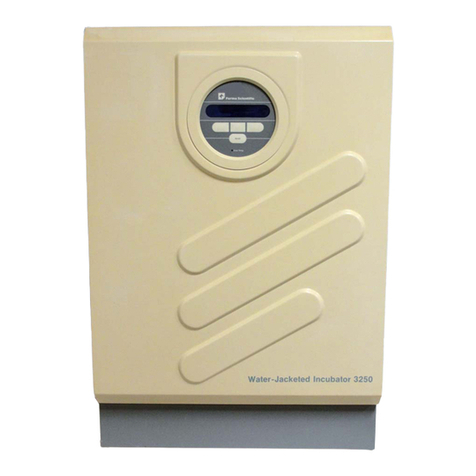
Forma Scientific
Forma Scientific 3250 User manual

Forma Scientific
Forma Scientific 3158 User manual

Forma Scientific
Forma Scientific 3940 User manual

Forma Scientific
Forma Scientific 310 Series Operating instructions

Forma Scientific
Forma Scientific 3911 Operating instructions
